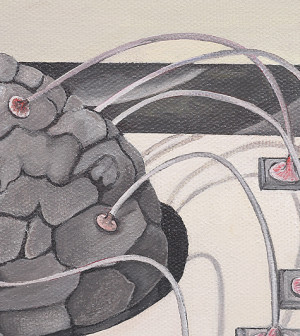- Understanding the Connection Between Anxiety and Depression
- How Daily Prunes Can Influence Cholesterol and Inflammation
- When to Take B12 for Better Absorption and Energy
- Epsom Salts: Health Benefits and Uses
- See What Saffron Can Do for Sleep and Heart Health
- 6 Common Mistakes to Avoid Before Your Physical
- Can Sweating Really Help You Beat a Cold?
- Strengthening Your Relationship: Practical Strategies
- Skip Storing This Everyday Product in the Fridge Door
- Green Tea + B3 Pairing May Boost Brain Health
Young Blood Boosts Brains of Old Mice


Lending credence to the old saying that there’s nothing like young blood, a new study found that the brains of old mice were recharged when they were injected with blood from young mice.
If this approach works in people, it could be used to give a boost to aging brains or lead to new ways to treat Alzheimer’s disease and other types of dementia, according to researchers at Stanford University School of Medicine.
The researchers examined a brain structure called the hippocampus in old mice with circulatory systems that had been surgically connected with the circulatory systems of young mice or other old mice. The hippocampus plays an important role in memory, but becomes less effective during the aging process.
“We know that detrimental anatomical and functional changes occur in the hippocampus as mice and people get older. This is just from natural aging. We’re all heading in that direction,” study lead author Saul Villeda said in a Stanford news release.
The researchers found that the hippocampi of old mice linked with young mice more closely resembled those of younger mice than the hippocampi of old mice connected with other old mice. The findings were published online May 4 in the journal Nature Medicine.
For example, hippocampal cells in old mice paired with young mice made higher levels of substances the cells typically produce when learning is taking place. And hippocampal nerve cells in old mice paired with young mice also showed an improved ability to strengthen their connections with one another, which is essential to learning and memory.
“It was as if these old brains were recharged by young blood,” study senior author Tony Wyss-Coray, a professor of neurology and neurological sciences at Stanford, said in a university news release.
In the next phase of its research, the team injected plasma — the cell-free part of blood — from young mice into old mice. These old mice did better on memory tests than old mice that did not receive plasma from young mice.
“We’ve shown that at least some age-related impairments in brain function are reversible. They’re not final,” said Villeda, who was a graduate student at Stanford when the study was conducted and is now at the University of California, San Francisco.
Wyss-Coray said: “There are factors present in blood from young mice that can recharge an old mouse’s brain so that it functions more like a younger one. We’re working intensively to find out what those factors might be and from exactly which tissues they originate.”
However, he added, “We don’t know yet if this will work in humans.”
Promising research with animals often fails to produce similar results in humans.
Wyss-Coray has co-founded a biotechnology company to study if and how these findings might be useful in treating age-related memory and thinking declines in people.
The new study was funded by the U.S. Department of Veteran Affairs, the U.S. National Institute on Aging and the California Institute for Regenerative Medicine.
More information
The U.S. National Institute on Aging offers advice for healthy brain aging.
Source: HealthDay
Copyright © 2026 HealthDay. All rights reserved.










